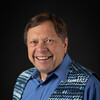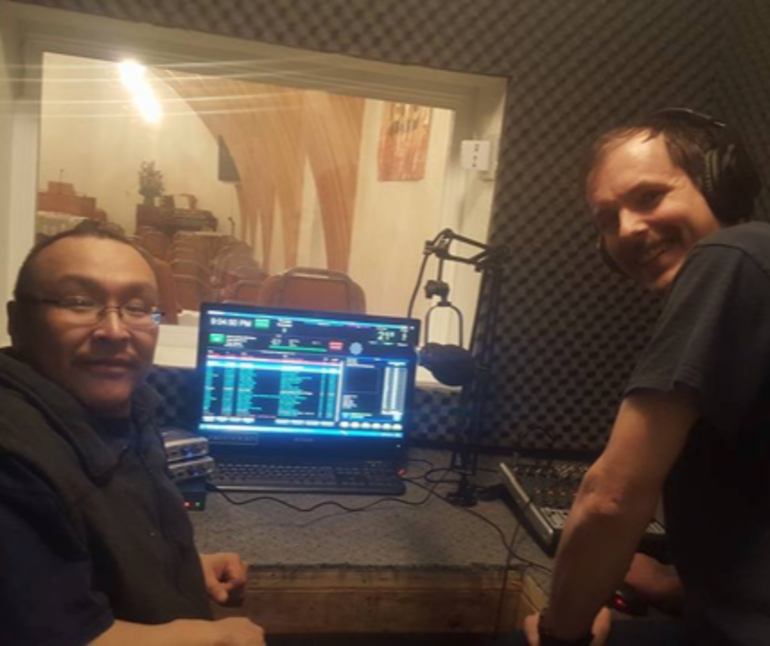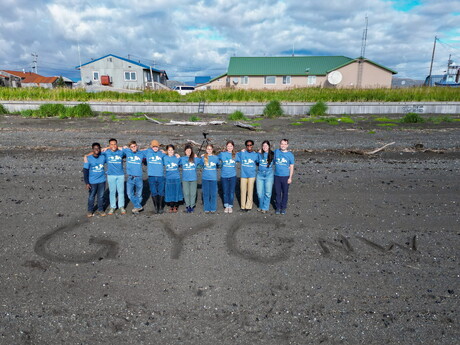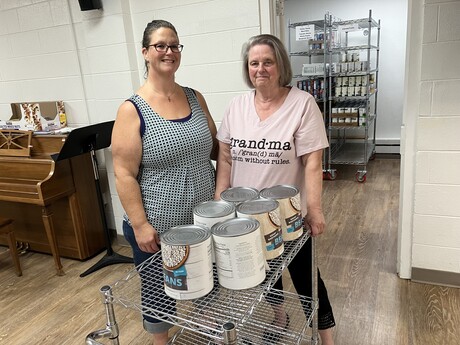I am here in Nome, Alaska, for Arctic Camp Meeting on this last Feb. 21–23, 2020. Blue sky with daytime weather +5F and nighttime at -22F. What an enjoyable spiritual time.
Steve: Readers, meet Ryan Woehler in Nome. Ryan is general manager of Alaska Adventist Radio Network. Ryan, I have a new nickname for you, “Radio Ryan,” because you love radio and communicate through radio. I appreciate your taking time to interview. Tell me about yourself. First, where did you grow up and what brought you to Nome?
Ryan: I grew up in Sandpoint, Idaho. I went to Walla Walla University to train as a pilot. In 1992, I moved to Alaska to volunteer in Native ministry work as a pilot near Selawik. After that, I flew around Denali giving flight-seeing tours, and taking climbers to the mountain. I have enjoyed flying into the back country, landing on glaciers, beach gravel bars and using float planes to take hunters to remote places.
Steve: It must have been a great adventure, probably pretty tricky at times with weather …
Ryan: Yes, the challenge was a highlight for me. I went back to school, training in aircraft mechanics. I then hired on with Bering Air, beginning in Kotzebue at first and now flying out of Nome.
Steve: How long have you been with Bering Air?
Ryan: Twenty-two years now. I love the variety: doing flights to Native communities, taking mail, passengers, medevac transports and occasional flights to the Russian Far East.
Steve: I keep hearing this idea from Tobin Dodge, our Alaska Mission Adventure director. It's the idea of reaching the many Alaskan villages through Christian radio. This vision stirs me, especially since the majority of these villages are reachable only by air or boat and, in the winter, by snowmobile also. Tell us how the radio ministry here began.
Ryan: It began in 2009. Some benefactors in California were applying for radio stations for all over the world. An application window with the FCC came up and they applied for a license for the Nome Church. Many technological challenges happened in trying to keep the full power station on the air.
I was standing here in the radio office of the church one day looking at the equipment. The thought struck me of how powerful it would be to use radio to reach our villages. I talked to my brother and we began mulling over how to make it work with the logistic and internet limitations. We also wanted to customize the content to be relevant and personal. Not only would it be Christian content, but we would adapt the broadcast to fit each specific village. For example, we produce a weather forecast for each village, rather than just giving regional weather, and when possible we announce flight arrival times for each community. We spent several years refining the technology to achieve that vision.
Through all this was born the Alaska Adventist Radio Network (AKARN). We have expanded from Nome to now having stations in seven other communities: Gambell, Savoonga, Shungnak, Wrangell, Selawik, Fairbanks and Bethel (2019).
We have seen many miracles. For example: the population for the borough (county) of Fairbanks is 100,000 people. We predicted the coverage area of our station to reach about 30,000, and yet when we put up the antenna and turned on the power … our signal reached 90,000 out of 100,000 living in the area.
Steve: Utterly amazing! Praise the Lord! I mean … hallelujah! God wants people to hear. What further plans do you have?
Ryan: In the wings, we're planning to put a station at the top of the world, Utqiagvik (formerly Barrow) for the Inupiat people there; also one in Craig, down in southeast Alaska.
Steve: What is needed for a church to get started with radio?
Ryan: Prayer. Then financially, it takes from $17,000 to $20,000, from start to finish — for engineering studies, to put up a tower, transmitters, etc.
A great idea came up. On St. Lawrence Island in the Bering Sea, where we have a station, our recent workers, the Marlows, said that people were not hearing our station (there had never been an FM station there before). “Why don’t we get little handheld radios, one for each home?” They were purchased and the Marlows put a label on each one with the station's name and went from home to home meeting folk and giving them out. The people were so happy to get them and our number of listeners really increased.
Steve: God is on the move, suggesting, providing, inspiring!
Ryan: There are 220 villages in Alaska to reach for Christ. There is an Adventist Christian presence in 11 of them. It's hard to imagine staffing all of them with missionaries. But radio! It opens so much possibility. For funding the projects we have adopted George Mueller’s philosophy. He said, “I will ask no man.” The radio network is growing by faith. God continues to provide. It’s hard to measure the effect of radio out there. But, if I get one little piece of news that someone was touched by something that was aired, I am good for years to come! We are planting seeds, and some are getting through. When I hear that the pastor from Wrangell visited a nursing home and the radio station was playing at a resident’s bedside or when I hear that a village clinic plays the station all day long, those are my wages.
We don’t know exactly the effect of the message or who is listening. I mean, who calls a radio station anyway to thank them for great programming? In some ways, radio ministry can seem like a thankless ministry. But we hear lots of stories like these, and we get stirred up all over again! Joe Mann [another radio man in Washington State] once told me, “We were not called to be successful, but to be faithful.” That principal has been fundamental to maintaining our focus.
Steve: How can folk tune into your station?
Ryan: We livestream on the internet at www.akadventistradio.net.
Steve: Thank you for taking the time to tell the story of what God is doing through radio to send this glorious message out! It's another super way of helping to prepare people for the Great Chief’s arrival.
Reader, why not tune in some time and listen? And pray for these radio waves. You may email Ryan.













